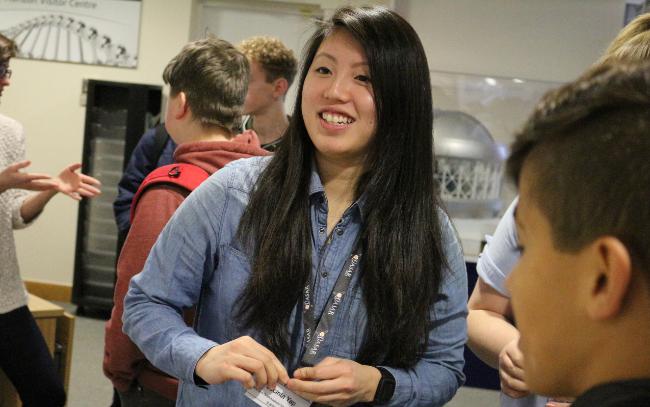Jacinta Yap: “I wanted to use my technical expertise but also to do something that would impact people's lives directly.”

“I think my past is quite unconventional. Growing up I had an interest in maths and science but I didn’t really know what I wanted to do at university. Initially I wanted to do a science degree, but given my dad and brother’s background in mechanical engineering, my parents advised me to pursue something more practical and so I did a major in mechanical engineering. After that I came across medical physics, and it's got everything that I’m interested in and what motivates me: science, medicine, physics and all the technical aspects from engineering. I wanted to use my technical expertise but also to do something that would impact people's lives directly. As a medical physicist, I will work in a hospital and interact with patients, doctors and machines, seeing first-hand the difference I am making. “
Jacinta Yap is a Marie Curie Fellow in the QUASAR Group and is based at the Cockcroft Institute, UK. Her project within the international training network OMA is looking into beam diagnostics and radiobiology to optimize the use of particle beams for cancer treatment. Protons have unique physical and radiobiological properties, and so proton beam therapy offers advantages for specific cancer types. In particular, they can be shaped as narrow, focused beams that accurately target the tumour with minimal damage to healthy tissue. Although significant progress has been made in the use of proton beams for cancer treatment, further work is needed to maximize the healthcare benefits from these therapies.
“My project with the Optimisation of Medical Accelerators network is looking at both beam diagnostics and radiobiology. OMA is a great example of the international opportunities and collaborations involved in researching and advancing proton therapy. With proton therapy you need a very precise beam to ensure that the dose is delivered very accurately.
We are developing a non-interceptive method of online beam monitoring; this will improve the accuracy of proton cancer therapy.”
“I always find it inspiring when I see women who have done so much for their particular field.”
“Coming from engineering I've always been one of the few women. Although I'm lucky – I haven’t really experienced much discrimination in the field. I think it’s a good challenge and when you work with other women there is a bond.
Being a woman in this field can be quite valuable. I find that sometimes I can think of different areas or different ideas that other people have not thought of before. It brings another perspective to a lot of things.
There are quite a lot of women who are prominent in medical physics, so that’s been really cool. I always find it inspiring when I see women who have done so much for their particular field.